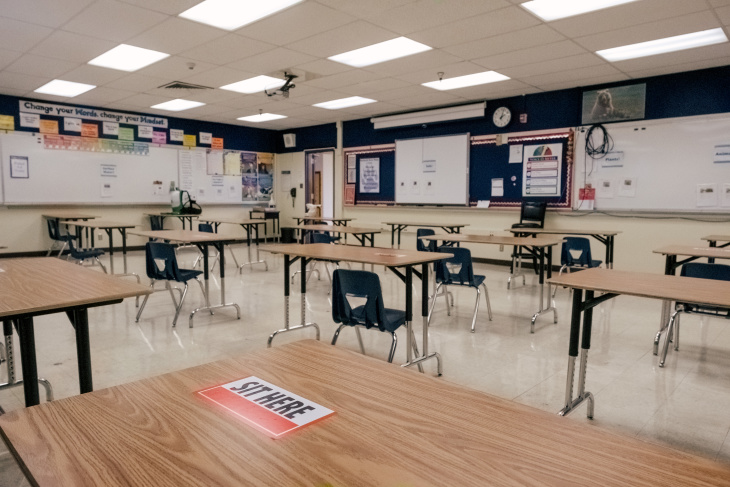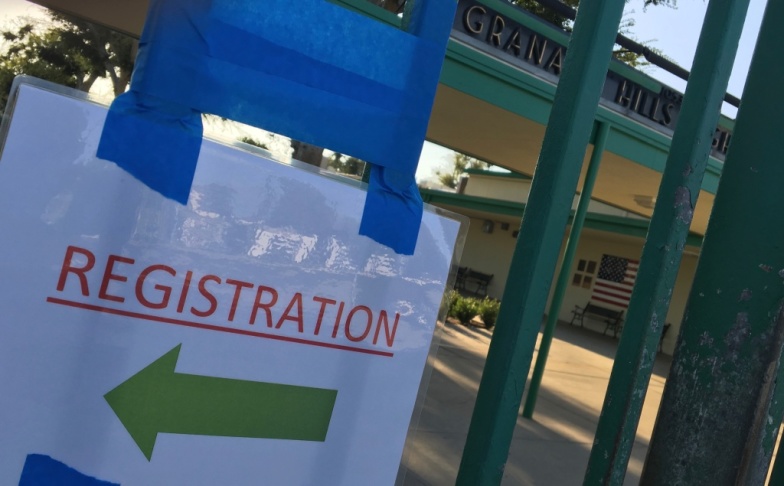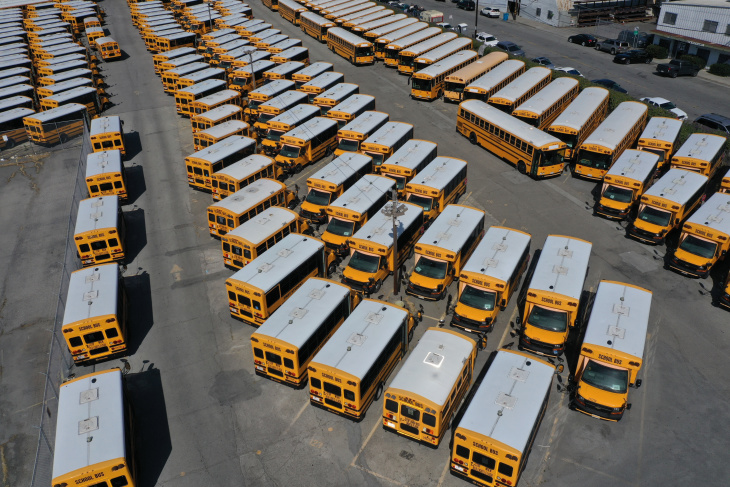
Our news is free on LAist. To make sure you get our coverage: Sign up for our daily newsletters. To support our non-profit public service journalism: Donate Now.
In normal times, the basic rule of California public school funding is simple: when a student attends a school, that school gets paid to educate them.
Back in June, state lawmakers suspended that rule, voting to freeze schools’ funding at last year’s levels for the rest of this year. They figured the last thing schools with declining enrollments needed during the COVID-19 crisis was less money.
But what about schools with enrollments that are rising? The state budget’s “hold-harmless” provisions could deny more than $500 million in funding to these growing schools and districts, according to an estimate from a group of four charter school networks now suing the state.
So on Monday, the legislature passed Senate Bill 820, which would allow many schools with rising enrollments to claim higher levels of funding than they did last school year. Gov. Gavin Newsom is expected to sign the bill.
“It’s a fair compromise,” said Assemblyman Kevin McCarty (D-Sacramento) during a legislative hearing on Sunday. He said the bill balances the needs of these growing schools with the state’s limited resources; already, the state is balancing its budget by asking K-12 schools statewide to endure more than $11 billion in late payments.
In Southern California, SB 820 would ensure districts in burgeoning suburbs like Irvine, Hemet and Redondo Beach are funded at levels that more closely match their actual enrollments this year.
But the four growing charter schools are likely to continue their lawsuit. While growing charter schools are also eligible for the additional funding under SB 820, an attorney for the plaintiffs said the bill doesn’t go far enough to make these schools whole.
“It still doesn’t do what the constitution says [lawmakers] are supposed to do,” said Jerry Simmons, a partner at the law firm Young, Minney & Corr, “which is to fund every child’s education. That is every child’s constitutional right.”

HERE’S WHY THE PLAINTIFFS STILL AREN’T HAPPY
Take the case of Sycamore Creek Community Charter School in Huntington Beach, one of the plaintiffs Simmons represents.
Under the old “hold-harmless” rules, Executive Director Sarah Bach says Sycamore Creek would’ve only received state funding for 65.9 kids, which was the school’s “average daily attendance” figure in late January.
Under SB 820, Sycamore Creek will be funded for 125 students, which is the projection school officials wrote into budget planning documents months ago.
But Sycamore Creek currently enrolls more than 130 students — it expanded to include an additional grade level this year — and could realistically accept 150 students.
So why will Sycamore Creek receive funding for only 125 students rather than the 130 or more it will actually serve? The answer: SB 820 will only fund growing schools based on either their projected enrollment or their actual enrollment — whichever is lower.
But Simmons says schools are incentivized to budget based on conservative projections — after all, schools don’t want to end up with extra staff members or supplies they can’t afford if they don’t hit an aggressive enrollment target. He says SB 820 penalizes these schools for being prudent.
Bach and her staff feel whipsawed by Sacramento’s changing funding regulations.
“By the time [the “hold-harmless” provision] was proposed, we were just at a loss,” Bach said. “What do we do? Because our actuals are going to be so much different than what the state is saying we’ll be funded on.”

‘YOU HAVE TO DRAW A LINE SOMEWHERE’
But officials in the state Department of Finance and many legislative Democrats said the state, facing projected multibillion-dollar budget shortfalls, doesn’t have the money to both hold shrinking districts harmless and ensure all growing schools will be made whole.
If the state pumped more money into SB 820, “it’s very likely we would have to significantly increase the amount of deferrals in the current year,” said Jessica Holmes, an analyst with the Department of Finance, in legislative testimony last week.
A complete restoration of funding to growing schools “would be hundreds of millions of dollars,” McCarty said in floor debate Monday night. “There’s no magic tooth fairy handing around money here.”
The original “hold-harmless” provisions in the budget assumed that schools with declining enrollment — including the state’s largest school system, Los Angeles Unified — were likely to be hardest hit by the pandemic.
So lawmakers decided to prioritize a funding freeze for declining enrollment districts. Implementing this priority required setting some limits, McCarty said: “You have to draw a line somewhere.”
Simmons wonders why.
“Their rationale seemed to be they were wanting to ensure the large urban districts were protected,” said the attorney. “But I question that … It’s always been California’s policy to protect [funding for] declining enrollment school districts for a year to give them an opportunity to right-size their operations — so in fact, that was already part of the law.”
SB 820 cleared both chambers — controlled by Democratic supermajorities — by wide margins. Most of the “no” votes came from Republicans who objected to the bill making virtual charter schools with growing enrollment ineligible to have their funding fully restored.
“This policy deviates from the state’s long-held principle of funding following students,” said Myrna Castrejón, president of the California Charter Schools Association, in a statement.
But both McCarty and Holmes noted many of the charter schools that are affected also had access to extraordinary funding sources. Both alluded to the fact that charter schools across California claimed more than $240.7 million in Paycheck Protection Program loans, according to one analysis.
Because of their nonprofit status, charter schools were eligible to take out these loans, backed by federal coronavirus relief money. School districts did not qualify.





More Stories
Lawmakers recommend COVID relief for snowmobile associations; school funding gap still looms
Questions linger one month into Saskatchewan’s back-to-school plan
NH school-funding commission wrestles with ‘first-last dollar’ rule